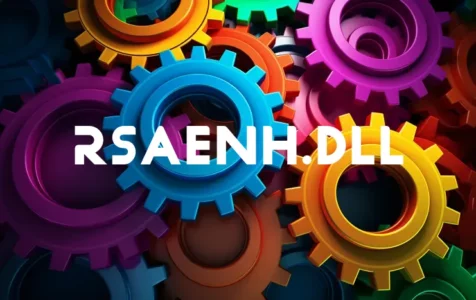Understanding RSAENH.DLL
rsaenh.dll is a Windows system file that stands for “Microsoft Enhanced Cryptographic Provider.” This dynamic link library (DLL) file is a component of the Microsoft Windows operating system and is used for performing various cryptographic operations, including encryption and decryption of data, using 128-bit encryption standards.
Is RSAENH.DLL Safe to Run?
Yes, rsaenh.dll is a legitimate Windows system process and is considered safe. It is an essential part of the operating system and plays a crucial role in maintaining the security of data on your computer. It is not recommended to delete or modify this file, as it could potentially compromise system security or lead to system instability.
Could RSAENH.DLL be a virus or malware?
Under normal circumstances, rsaenh.dll is not a virus or malware. However, it is possible for malicious programs to disguise themselves as legitimate system files, including rsaenh.dll. If you suspect that the file might be infected, it is advisable to run a full system scan using reputable antivirus or anti-malware software.
Common Issues Associated with RSAENH.DLL
Some users may encounter error messages related to rsaenh.dll, indicating that the file is either not designed to run on Windows, contains an error, is missing, or is corrupted. These errors could impact the functionality of certain software applications or even result in system crashes.
Expert Tip: For smoother PC performance, consider using a PC optimization tool. It handles junk files, incorrect settings, and harmful apps. Make sure it's right for your system, and always check the EULA and Privacy Policy.
Special offer. About Outbyte, uninstall instructions, EULA, Privacy Policy.
Fixing Issues with RSAENH.DLL
If you are experiencing issues with rsaenh.dll, here are some troubleshooting steps you can take to resolve them:
1. Run a System File Checker (SFC) scan:
Running an SFC scan can help detect and repair corrupted system files. To perform the scan:
– Open Command Prompt as an administrator.
– Type the command `sfc /scannow` and press Enter.
– The scan will begin, and Windows will attempt to fix any detected issues.
2. Perform a Clean Boot:
Conflicts with other applications can cause errors. Performing a clean boot starts Windows with a minimal set of drivers and startup programs to help identify if background programs are interfering with rsaenh.dll.
3. Update or Reinstall the Affected Software:
If the error is associated with a specific application, try updating or reinstalling that application to see if it resolves the issue.
4. Run Windows Update:
Keeping your system up to date can help prevent compatibility issues. Go to Settings > Update & Security > Windows Update to check for and install any available updates.
5. Check for Malware:
As mentioned, rsaenh.dll can sometimes be a target for malware. Use an up-to-date antivirus program to scan and remove any threats.
6. Perform a System Restore:
If the error started occurring recently, reverting your system to a previous state when everything was working correctly can help.
7. Use the Deployment Image Servicing and Management (DISM) tool:
If SFC did not resolve the issue, DISM might be able to help. Run `DISM /Online /Cleanup-Image /RestoreHealth` in an elevated Command Prompt and then run an SFC scan again.
For community discussions related to issues with rsaenh.dll, including experiences and solutions shared by users, you can visit the Microsoft support forums or other trusted technology forums. Be wary of downloading DLL files from external websites, as they may not be safe.
Downloading and Registering DLL Files
While downloading DLLs from the internet can fix some errors, it is generally not recommended, as files obtained from unverified sources can be infected with malware. If you must download a new copy of rsaenh.dll, ensure you do so from a trusted source.
If the rsaenh.dll file needs to be registered, you can use the following commands in an elevated Command Prompt:
– To register the DLL, type `regsvr32 rsaenh.dll` and press Enter.
– To unregister the DLL, type `regsvr32 /u rsaenh.dll` and press Enter.
Always create backups and set system restore points before making significant changes to your system, as a safety net in case something goes wrong. If you are uncomfortable performing any of these tasks, you might prefer seeking the help of a professional.
